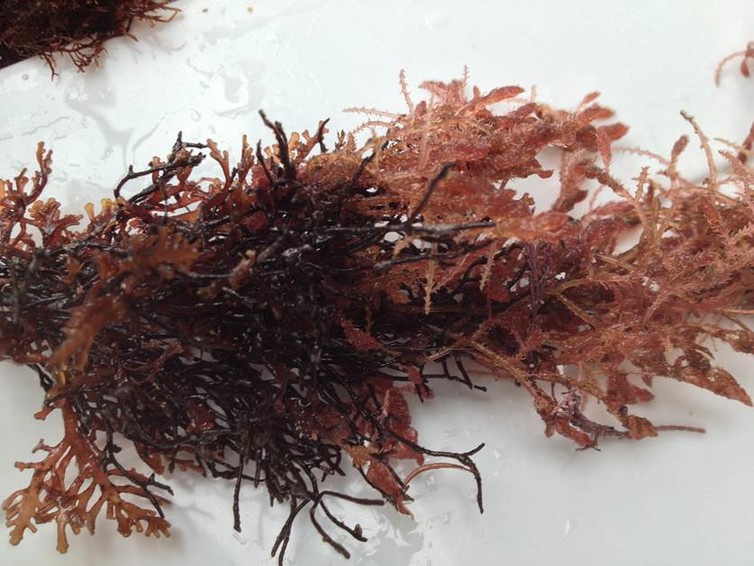Feeding cows with algae reduces methane emissions

The ancient Greeks and Icelanders knew that feeding the cows with algae helps to increase milk yield and at the same time provides a faster weight gain in animals than in the case of grass or hay. This agricultural practice was forgotten for many hundreds of years, until Canadian farmer Joe Dorgan reopened this secret 11 years ago. He found that cows grazing on the coast and regularly chewing on algae feel better and have more milk than their relatives feeding on the usual cattle feed set.
As it turned out, feeding with the use of algae has another advantage - cows begin to throw less methane into the surrounding space. Generally speaking, this is quite a significant problem, because cows emit a lot of methane into the atmosphere - about 5% of the global production of this gas. Methane is a greenhouse gas, as well as CO2 and water vapor.
Canadian scientists Rob Kinley (Rob Kinley) and Alan Freedin (Alan Fredeen) conducted a series of studies to find out why the cows on “seafood” feel so well. Actually, all these conclusions are good and interesting for representatives of agriculture, but one of the results of their research interested also climatologists, together with specialists who are engaged in environmental protection. It turned out that cows that feed on algae emit 20% less methane than those animals that eat grass, mixed fodder, and everything else that is supposed to.
')
In addition to cows, scientists checked the reaction of representatives of another 20 species of herbivorous animals to feeding on algae. Here the results were different - from a zero effect to a 50% reduction in the output of methane with waste products of the body. The more algae were given to animals, the less methane they generated. In the diet of the subjects were added at least 20% of the algae of the total mass of feed.
The reduction is not so significant, so that on this occasion it would be possible to beat the drums. But once scientists decided to check what happens if you feed the animals with algae of one of the species characteristic of the coastal waters of Queensland. It is about Asparagopsis taxiformis. As it turned out, the effect here is much higher, methane was emitted 99% less than under normal conditions.
Experts found out the reason for this feature of algae. The fact is that Asparagopsis taxiformis produces bromoform (CHBr₃) in small quantities. This compound prevents the synthesis of cow methane as a result of interaction with vitamin B12 in the final stage of digestion. As a result, the enzymes used by microorganisms from the digestive system of herbivores to generate methane do not come in the right quantities.
So what?
Now the governments of many countries declare their readiness to combat global warming. In a number of countries, these are not just statements, but real actions contributing to the reduction of carbon dioxide and methane emissions to the atmosphere.
And these actions lead to significant results. Despite the fact that the economy continues to grow (and this is so), over the past three years, global carbon dioxide emissions into the atmosphere have not changed. According to some experts , the dynamics of greenhouse gas emissions into the atmosphere over the next few years will depend on whether countries adhere to accepted principles of energy and climate policy, as well as align their actions with the temperature goals of the Paris Agreement.

The population of the Earth continues to grow, and all these people need something to feed. Cattle - a source of a large number of products, from milk and dairy products to meat and semi-finished products. The problem is that cows produce methane, as mentioned above. More people - more cows are needed, as a result - the amount of greenhouse gas emissions is growing. But there is a solution - as it turned out, Asparagopsis taxiformis effectively counteracts the generation of methane, which opens up the possibility of increasing the number of cattle in the world while reducing the amount of methane produced.
What countries can afford to feed their cows with algae? This is, first of all, Australia, Canada, the United Kingdom and other states that have access to the sea and its gifts. Algae can even be grown on special sea "meadows", without taking up land for pastures. Algae yield is 30-50 tons of dry material per hectare. In Australia, to provide 10% of livestock with algae, this will require 6,000 hectares of marine “land”.
Source: https://habr.com/ru/post/399253/
All Articles